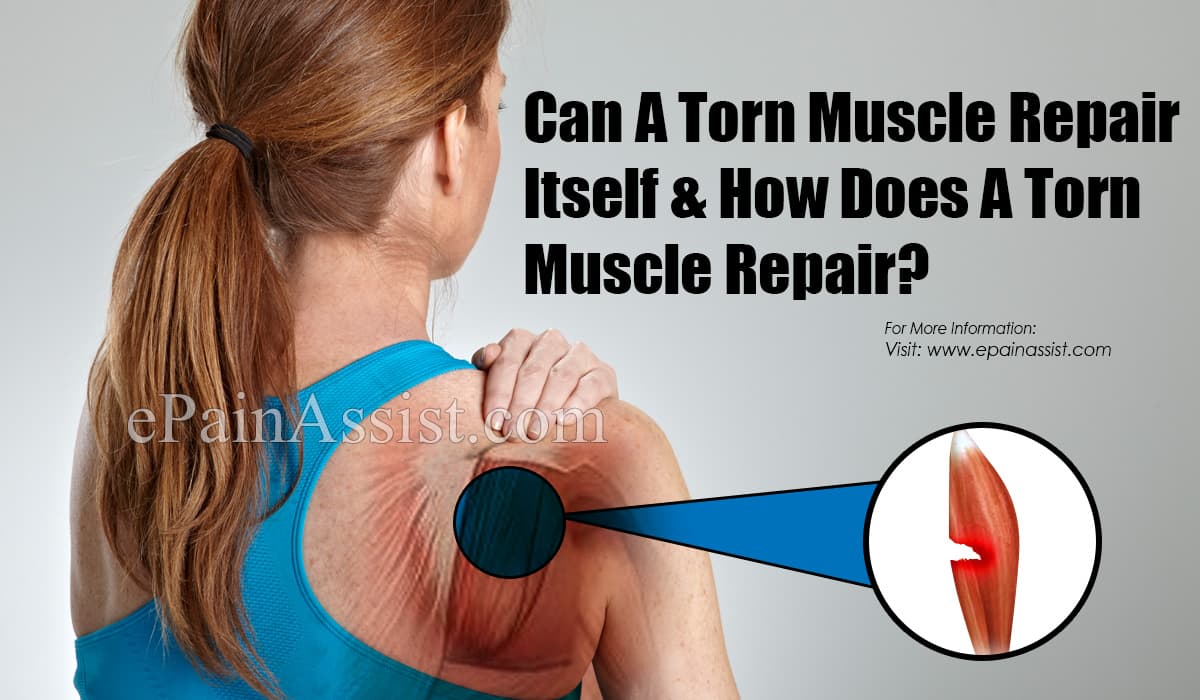Before we move to repairing of the torn muscle, let us first briefly discuss about muscle tear, its causes and symptoms.
Muscle tear refers to damage to the muscles or the tendons attached to the muscles. A muscle tear can damage the blood vessels, which can lead to pain and bruising caused due to irritation of the nerve endings in that area.1 Muscle tear can result from pressure on the muscles during the course of normal daily activities, heavy weight lifting or during sports.
Our muscles are made of fibers, which resemble the threads wounded into a rope. Tear in the muscles occurs when these threads are stretched too much. As the muscle fibers break, their ends spring or curl up. The empty space fills up with blood, leading to discoloration or bruising which appears after a day. The severity of the muscle tear depends on the severity of the stretch or the blow received to the muscles.
Muscle can tear due to various reasons such as:
- Lack of proper warm-up before working out.
- Overstressing the muscles.
- Overtired muscles or muscle fatigue.
- Poor repair of a previous muscle injury.
The symptoms accompanied with muscle tear are:
- Pain even at rest.
- Swelling.
- Bruising and redness.
- Inability to use the muscles.
- Weakness of the muscles.
- Pain in the movement of the joint related to the torn muscle.

Can A Torn Muscle Repair Itself & How Does A Torn Muscle Repair?
Yes, a torn muscle can repair itself, to an extent. A little help is required to achieve complete and healthy healing of a torn muscle. A torn muscle cannot completely repair itself, as the torn muscle fibers get replaced with scar tissue, which does not provide the same amount of strength and flexibility.
Once the muscle tear occurs, the body rushes the fluid to the area, to immobilize the damaged part. This starts the repair process of the torn muscle. As the damaged muscle area gets filled up with fluid, there is pressure on the torn blood vessels which stops the bleeding. This self-healing of the muscle can sometimes be dangerous and can add to problems later on. When the fluid comes up to the site of muscle injury, the body brings proteins there, which can have negative effects on the muscle healing process. Moreover, the muscle cells grow very slowly and therefore cannot repair themselves naturally and completely on their own. Another soft tissue in the area of damage grows quickly and usually, the connective tissue replaces the damaged part. The connective tissue is harder and less elastic. The quality of muscle repair is poor and is prone to recurring injury.
A muscle tear is less likely to recur if the muscles are strong and healthy and heal better. To achieve better muscle healing, physical therapy is therefore required to heal a torn muscle effectively.
The first goal of the therapist is to stop the bleeding, which is done by applying ice immediately to the site of muscle injury. The injured area is elevated and put on rest. This reduces the blood flow to the injured muscle area. A bandage application helps in reducing the swelling in the torn muscle. Most of the time, over-the-counter anti-inflammatory drugs are prescribed to help ease pain and swelling and to speed up the muscle healing process.
After the torn muscle has healed substantially, the physical therapist then goes ahead with the muscle strengthening exercises with specific strokes and stretches to correctly align the new muscle threads and fibers. Physical therapy also helps in breaking down the scar tissue, gently stretching the muscles, and increasing the circulation and the quality of repair of the muscles.
Muscles need a long time and help to repair properly. A proper treatment, though slowly, but surely helps a torn muscle recover completely from the injury.
Also Read:
